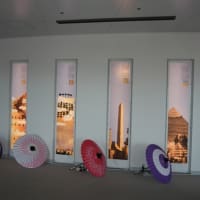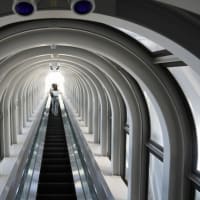The following is from the serial column of Masayuki Takayama, who brings the weekly Shincho released today to a successful conclusion.
This article also proves that he is the one and only journalist in the postwar world.
It is a must-read not only for Japanese citizens but also for people around the world.
Attack on Enemy Territory
The climax of the Russo-Japanese War was the Battle of the Sea of Japan between the United Fleet led by Heihachiro Togo and the Baltic Fleet, which was three times larger than the United Fleet.
Toru Hashimoto would have said, "We know we will lose. Togo should run away."
The New York Times thought so, too.
The reason was that both battleships were of European standard or copies, and the caliber of their main guns and the thickness of their armor were almost identical.
If so, victory or defeat would be decided by the number of battleships.
The Baltic Fleet, which had three times as many ships, seemed to have a threefold advantage.
Besides, the poorer side was a non-white nation not accustomed to naval battles.
However, the first report reached the editorial office: "It sank 12 major ships of the Baltic Fleet," while Togo's fleet was completely unharmed.
It is an incredible story.
So, they had the first news report written, "There are reports that a mutiny of sailors broke out in the Russian fleet, and they ejected the kingpin, causing it to sink itself."
The first report was so unbelievable that they were tempted to make such an escape.
Soon after, detailed reports arrived, and it learned that the Baltic Fleet had vanished.
The Western nations were even more shocked by Togo's strategy than by the fact that the Baltic Fleet had disappeared.
Since ancient times in Greece, it had been a form of naval warfare to sink a ship by plunging its bow into the flank of the opponent's ship.
For this purpose, the battleship's bow protruded like the chin of Antonio Inoki, and below the waterline was equipped with a ram to gouge out the opponent's belly.
However, Togo kept up a precise bombardment from several kilometers away without once making contact with the Russian fleet.
He used picric acid shells, which had three times the destructive power of Western artillery, and Oslavia, wearing thick iron armor, was the first to sink in flames.
The West did not have the technology to fill artillery shells with picric acid, which explodes immediately upon contact with iron.
Pakenham, a British spectator warfare officer, witnessed it from the battleship Asahi.
After receiving his detailed report, the British created the battleship "Dreadnought," a two-tiered battleship with three main guns that rivaled Togo's method of warfare.
The era of fighting with rams was over.
The birth of the dreadnought heralded the dawn of the new Taikan-kyoho era.
With the honor of naval power on the line, the British launched the super-dreadnought, which surpassed the dreadnought, and even the super battleship Prince of Wales, which surpassed the dreadnought, to create a more powerful battleship.
The ship was rushed from the Atlantic to Singapore at the request of F. Roosevelt.
It was six days before the attack on Pearl Harbor.
According to the deciphered code, the Japanese were going to attack Pearl Harbor and Malaya simultaneously.
The mission was to beat the enemy to the punch.
I will show the power of the giant warship cannon that Japan set as an example to that Japan.
It was not a battleship but a group of 96-type land attack aircraft that appeared in front of the commander of the British East Indies Fleet, who was uplifting and waiting.
The supposedly invincible ship and its companion ship, the armored cruiser Repulse, were soon sunk by thunderbolts and horizontal bombardment.
Japan taught in the actual battle that it was no longer the era of large warships.
Japan changed the shape of naval battles again.
The United States' material superiority barely caught up with Japan's updated naval battle system, and on the other hand, it was fortunate to crush Japan's carrier group on the Midway.
Japan, having lost its foothold in air power, bent the knee when it came to the liberation of Asia.
The glory of Japan, which had rewritten the history of naval battles twice, seemed to be over, but soon after the end of the war, the U.S. forces identified and captured the vast submarine I-401 off the coast of Sanriku.
It was the same size as the Virginia-class attack submarine that the U.S. is currently building.
In the hangar below the command post were three "Seiran" bombers.
Because of its performance, the Igo could reach the U.S. East Coast.
The Seiran could be launched from within U.S. territorial waters and destroy even the Pentagon.
The U.S. was surprised three times, and from this was born the strategic nuclear submarine concept, in which a nuclear submarine is hidden in deep water and launches missiles.
They are finally catching up with the wisdom of the Japanese.
The other day, Tenseijingo ridiculed "Japan clinging to the old big-ship big-arms principle" with a story about the battleship Yamato, which left on a one-way ticket to Okinawa.
I want to do something about the folly of allowing children to brush off such lies.

This article also proves that he is the one and only journalist in the postwar world.
It is a must-read not only for Japanese citizens but also for people around the world.
Attack on Enemy Territory
The climax of the Russo-Japanese War was the Battle of the Sea of Japan between the United Fleet led by Heihachiro Togo and the Baltic Fleet, which was three times larger than the United Fleet.
Toru Hashimoto would have said, "We know we will lose. Togo should run away."
The New York Times thought so, too.
The reason was that both battleships were of European standard or copies, and the caliber of their main guns and the thickness of their armor were almost identical.
If so, victory or defeat would be decided by the number of battleships.
The Baltic Fleet, which had three times as many ships, seemed to have a threefold advantage.
Besides, the poorer side was a non-white nation not accustomed to naval battles.
However, the first report reached the editorial office: "It sank 12 major ships of the Baltic Fleet," while Togo's fleet was completely unharmed.
It is an incredible story.
So, they had the first news report written, "There are reports that a mutiny of sailors broke out in the Russian fleet, and they ejected the kingpin, causing it to sink itself."
The first report was so unbelievable that they were tempted to make such an escape.
Soon after, detailed reports arrived, and it learned that the Baltic Fleet had vanished.
The Western nations were even more shocked by Togo's strategy than by the fact that the Baltic Fleet had disappeared.
Since ancient times in Greece, it had been a form of naval warfare to sink a ship by plunging its bow into the flank of the opponent's ship.
For this purpose, the battleship's bow protruded like the chin of Antonio Inoki, and below the waterline was equipped with a ram to gouge out the opponent's belly.
However, Togo kept up a precise bombardment from several kilometers away without once making contact with the Russian fleet.
He used picric acid shells, which had three times the destructive power of Western artillery, and Oslavia, wearing thick iron armor, was the first to sink in flames.
The West did not have the technology to fill artillery shells with picric acid, which explodes immediately upon contact with iron.
Pakenham, a British spectator warfare officer, witnessed it from the battleship Asahi.
After receiving his detailed report, the British created the battleship "Dreadnought," a two-tiered battleship with three main guns that rivaled Togo's method of warfare.
The era of fighting with rams was over.
The birth of the dreadnought heralded the dawn of the new Taikan-kyoho era.
With the honor of naval power on the line, the British launched the super-dreadnought, which surpassed the dreadnought, and even the super battleship Prince of Wales, which surpassed the dreadnought, to create a more powerful battleship.
The ship was rushed from the Atlantic to Singapore at the request of F. Roosevelt.
It was six days before the attack on Pearl Harbor.
According to the deciphered code, the Japanese were going to attack Pearl Harbor and Malaya simultaneously.
The mission was to beat the enemy to the punch.
I will show the power of the giant warship cannon that Japan set as an example to that Japan.
It was not a battleship but a group of 96-type land attack aircraft that appeared in front of the commander of the British East Indies Fleet, who was uplifting and waiting.
The supposedly invincible ship and its companion ship, the armored cruiser Repulse, were soon sunk by thunderbolts and horizontal bombardment.
Japan taught in the actual battle that it was no longer the era of large warships.
Japan changed the shape of naval battles again.
The United States' material superiority barely caught up with Japan's updated naval battle system, and on the other hand, it was fortunate to crush Japan's carrier group on the Midway.
Japan, having lost its foothold in air power, bent the knee when it came to the liberation of Asia.
The glory of Japan, which had rewritten the history of naval battles twice, seemed to be over, but soon after the end of the war, the U.S. forces identified and captured the vast submarine I-401 off the coast of Sanriku.
It was the same size as the Virginia-class attack submarine that the U.S. is currently building.
In the hangar below the command post were three "Seiran" bombers.
Because of its performance, the Igo could reach the U.S. East Coast.
The Seiran could be launched from within U.S. territorial waters and destroy even the Pentagon.
The U.S. was surprised three times, and from this was born the strategic nuclear submarine concept, in which a nuclear submarine is hidden in deep water and launches missiles.
They are finally catching up with the wisdom of the Japanese.
The other day, Tenseijingo ridiculed "Japan clinging to the old big-ship big-arms principle" with a story about the battleship Yamato, which left on a one-way ticket to Okinawa.
I want to do something about the folly of allowing children to brush off such lies.



















